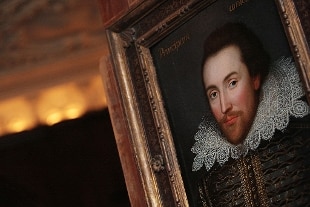The 'Red Lion' resurfaces in London, it was Shakespeare's theater
2020-06-15T20:20:01.530Z

London's oldest theater dates back to the mid-16th century and traces were lost: now, more than 5 centuries later, the remains have been found, during excavations carried out in the East End area for a new construction. One of the most exciting and significant finds from #WhitechapelCentral was the possible remains of the #RedLionPlayhouse, the UK's earliest (AD1567)! This site, with its prototype stage and seating, could represent the dawn of Elizabethan theater! Https: //t.co/wzbs4AFUTX pic.twitter.com/ZglHWfyZfk - UCL Archeology South-East (@ArchSouthEast) June 10, 2020 The press British has devoted a lot of space to the discovery and confirmation by archaeologists of University College London that those stones most likely belong to the "Red Lion", a building that has hitherto represented a "missing link" in the history of English theater . If in fact in the Middle Ages and even later, theatrical performances were dominated by biblical subjects, from the Elizabethan times of William Shakespeare they began to write and represent secular texts, often in themed theaters. And precisely at the Red Lion, the first stage for stable companies, Shakespeare's first plays would have been staged in the 1990s. According to experts, the discovery in the Whitechapel area helps to fill this gap between the two traditions. The Red Lion was a meeting place for drinking which, in 1567, granted the space in which it was located for the construction of the first themed theater. Amazing #archaeological news! @ArchSouthEast with lead archaeologist @stevejameswhite excavate the 'Remains of earliest purpose-built playhouse found in east London' 📲 https://t.co/GKqLC2KmWE @guardian #ThinkDifferentlyThinkArchaeology #JFConnections pic.twitter.com/dlEWGrrrrBB - UCL (@UCLarchaeology) June 10, 2020 Probably, we read in the English newspapers, at least at the beginning many of the representations still had a religious subject but progressively the secular ones had the upper hand. According to historians, it was Red Lion who prepared the ground for the construction of themed theaters in which the texts of Shakespeare and Marlowe would be represented. As far as is known, most or perhaps all the texts represented in that theater have been lost: many of those developed in the Tudor era were not even published in printed form. This is the case of the first work that was represented at the Red Lion, the History of Samson, of which the author is unknown and there is no evidence of its publication. The life of the building as a theater was not long, historians report: apparently, no more than a dozen years. In the meantime the tradition of themed theaters had taken hold, and the Red Lion probably became over time a place where dogs were made to fight, also judging by the many quadruped skeletons found during the excavations.
Share
15 June 2020The oldest theater in London dates back to the mid-16th century and traces were lost: now, more than 5 centuries later, the remains have been found, during excavations carried out in the East End area for a new construction . One of the most exciting and significant finds from #WhitechapelCentral was the possible remains of the #RedLionPlayhouse, the UK's earliest (AD1567)!
This site, with its prototype stage and seating, could represent the dawn of Elizabethan theater! Https: //t.co/wzbs4AFUTX pic.twitter.com/ZglHWfyZfk
- UCL Archeology South-East (@ArchSouthEast) June 10, 2020 The British press has devoted a lot of space to the discovery and confirmation by archaeologists of University College London that those stones are most likely to belong to the "Red Lion" , a building that so far represented a "missing link" in the history of English theater. If in fact in the Middle Ages and even later, theatrical performances were dominated by biblical subjects, from the Elizabethan times of William Shakespeare they began to write and represent secular texts, often in themed theaters. And precisely at the Red Lion, the first stage for stable companies, Shakespeare's first plays would have been staged in the 1990s. According to experts, the discovery in the Whitechapel area helps to fill this gap between the two traditions. The Red Lion was a meeting place for drinking which, in 1567, granted the space in which it was located for the construction of the first themed theater.Amazing #archaeological news! @ArchSouthEast with lead archaeologist @stevejameswhite excavate the 'Remains of earliest purpose-built playhouse found in east London'
📲https: //t.co/GKqLC2KmWE @guardian #ThinkDifferentlyThinkArchaeology #JFConnections pic.twitter.com/dlEWGrRrBB
- UCL Archeology #RemoteNotDistant (@UCLarchaeology) June 10, 2020 Probably, we read in the English newspapers, at least at the beginning many of the representations still had a religious subject but progressively the secular ones prevailed. According to historians, it was Red Lion who prepared the ground for the construction of themed theaters in which the texts of Shakespeare and Marlowe would be represented. As far as is known, most or perhaps all the texts represented in that theater have been lost: many of those developed in the Tudor era were not even published in printed form. This is the case of the first work that was represented at the Red Lion, the History of Samson, of which the author is unknown and there is no evidence of its publication. The life of the building as a theater was not long, historians report: apparently, no more than a decade. In the meantime the tradition of themed theaters had taken hold, and the Red Lion probably became over time a place where dogs were fought, even judging by the many quadruped skeletons found during excavations.

